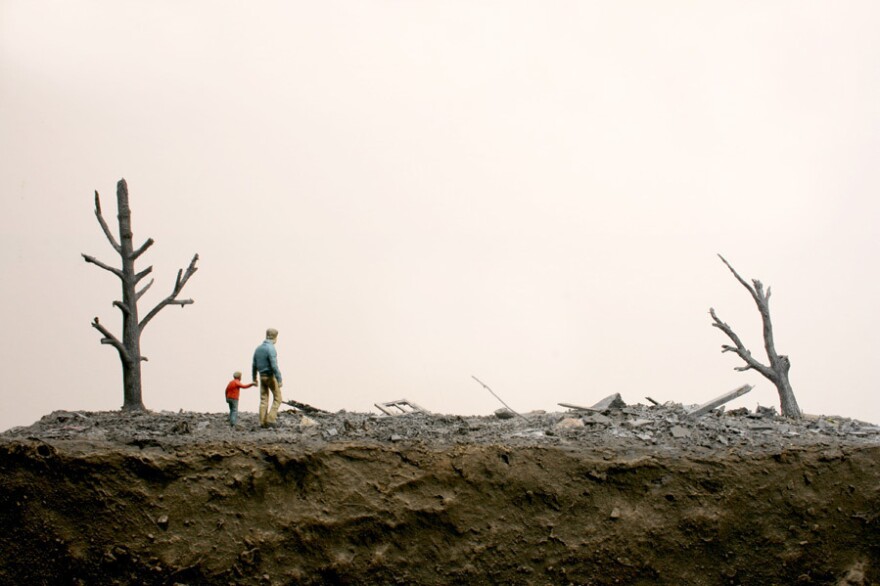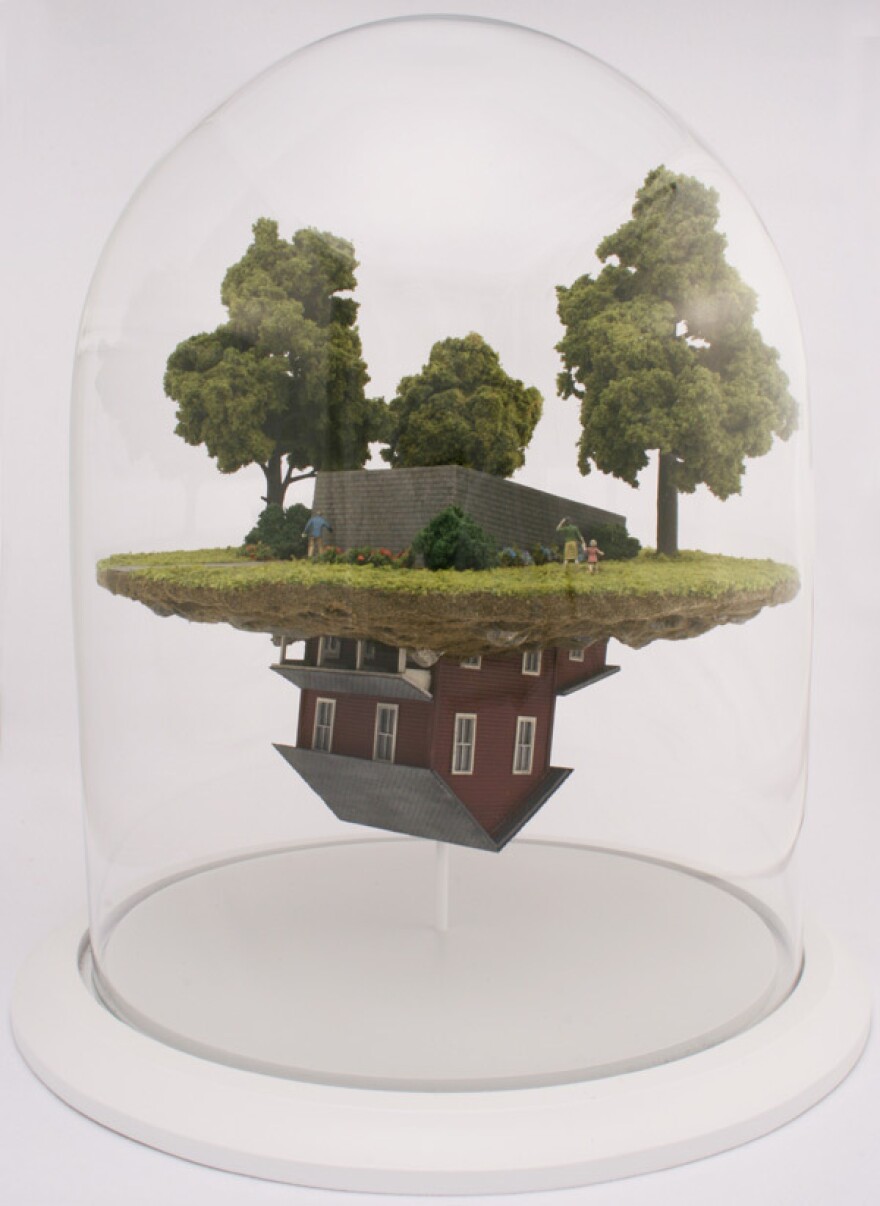There's a photograph I know that shows a kid's bicycle lying on its side, one wheel turned upright, a smear of blood tracing its path on the concrete. There's a little package still latched to the back, waiting for its owner to return. You can see where the bike swerved, then lost its way. Someone's been hurt. Or worse. The blood is still damp, the trail fresh. Whose blood was it? A child's, I imagine — from an accident? A shooting? The photo was taken by Annie Leibovitz during a war in Yugoslavia. It's called Bloody Bicycle (Sarajevo, 1993), and the picture doesn't just invite you, it compels you, forces you to ask, "What just happened?"

The thing that gets me about this picture is its grip. Annie Leibovitz finds exactly the right framing, the right angle, the right distance to tell me some — but not all — of what I want to know. The bicycle, the blood, the ground, what I see, what I can't see, makes me imagine a story. I have to imagine because, while there are clues in plain view, what I am really looking for — a victim, a perpetrator, an explanation — is missing. Or so it seems. So I keep looking. I can't stop.
It's All In The Grab
Great radio reporters can do this too; they take you somewhere, show you some, but not all, of what they saw, and you wait, stuck in your driveway, unable to stop listening, stop imagining, until you find out what you suddenly, desperately, need to know. There's a difference, of course. Leibovitz grabs your eyes. We grab your ears. But it's the grab that matters.
I am fascinated by storytelling glue. Anytime I see someone who's good at it, I stop and wonder, how'd they do this? Why can't I tear myself away? That's what I wondered when I saw this image from sculptor Thomas Doyle.
It's a home surrounded by a perfect circle of destruction — a kind of ground zero in reverse; the center is intact, everything else ruined.

Look more closely, you can see the house is small; the little girl lingering in the garden (is she the only survivor?) comes from a model railroad set. She's maybe a half-inch tall. This scene, the house, the garden, the girl, the vast tangle of debris, could fit on a dining room table, where you could sit down at it like an Olympian god. And, unlike the Leibovitz picture, with the Doyle sculpture you can change your point of view, looking from on high, or crouching down low, choosing any angle you like. But however you look, Doyle's scene, like Annie's photograph, is carefully designed to focus on the same question, "What just happened?"
Doyle's work is about mystery. Why was this one house, this one circle of space, spared? Why a circle? Why so precise, so neat, so tidy a circle? You probe for clues. But Doyle creates moments that confess nothing. Time, for him, is his glue.
His scenes are frozen, locked into a moment. You can't move forward to find out what happens next. You can't go back to find a cause. You are stuck in the Now. And there is no answer to the "what just happened?" question. You'll never know. Which is why you linger. There might be one hidden clue here ... somewhere ...

In this one, you can see something the dad and the boy can't. The mystery — how did an otherwise intact home get buried hundreds of feet down in the soil — is hidden from them. They don't know the house is there. Or maybe they do.
They seem to be looking for something. And there's an empty space — a house-size space — framed by two desolated trees where the man and boy are standing. I see a window frame sticking out of the ground. Maybe they know what happened. Maybe they know the "Why?" and I know the "Where," so I want to lean down and tell them, "Dig. You'll find it 200 feet below." But when I lean in ...

... they can't hear me. They are locked into their time, their space. I am locked out.

Here's the same idea, but flipped. This house has been topsy-turvied. Its basement is now pointing to the sky, but is totally intact. Its roof is now under the ground pointed at — what, exactly? Is there a mirror-world just below their feet? Do they know? What happened here? The three befuddled family members don't have clue (I imagine). Neither do I. The flip is surgical. The plantings that once sat against the front porch are exactly where they used to be, but the house has been cleanly yanked, then returned in reverse position. Who would do such a thing?
So much of what I do is to push my listeners to ask questions, to think, to wonder, to muse. Thomas Doyle has built story-making sculptures that push you to ask and ask and ask. His work makes questions flow, even overflow, even though we know there aren't going to be any answers; and still we keep asking. What a wonderful mood to be in. I'm so jealous of what he does. He does it so well.
If you'd like to hang out with him for three minutes, he's right here:
Copyright 2021 NPR. To see more, visit https://www.npr.org.




